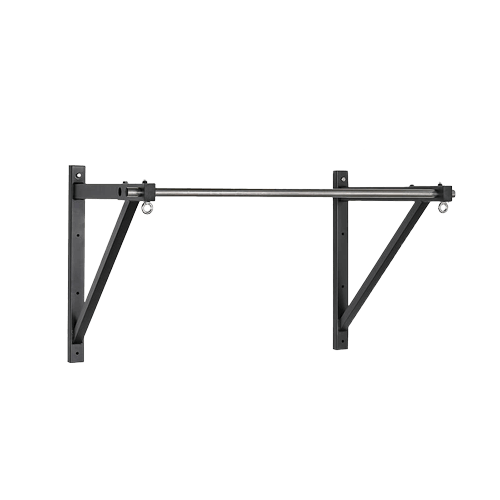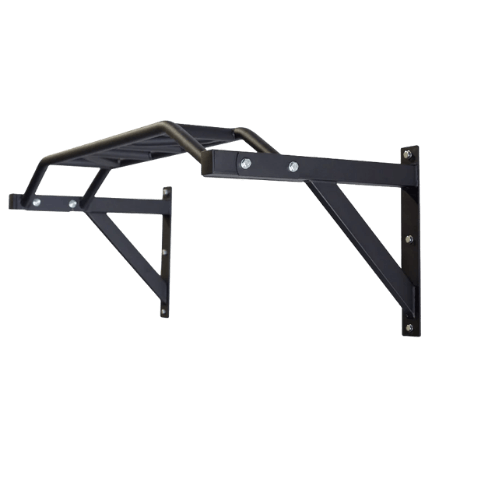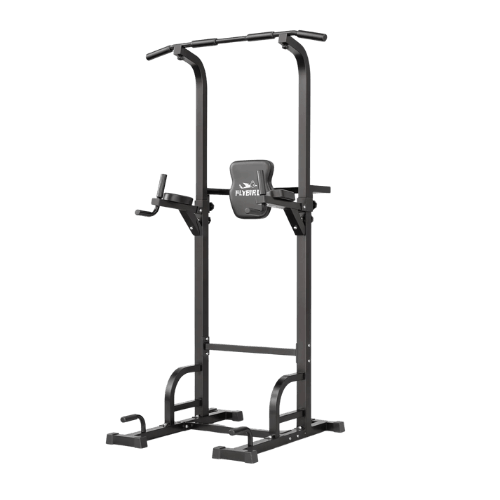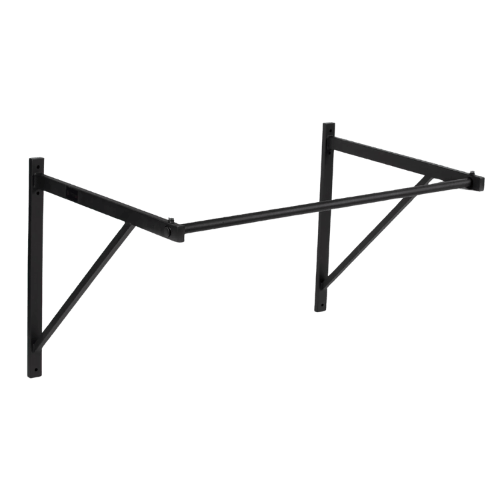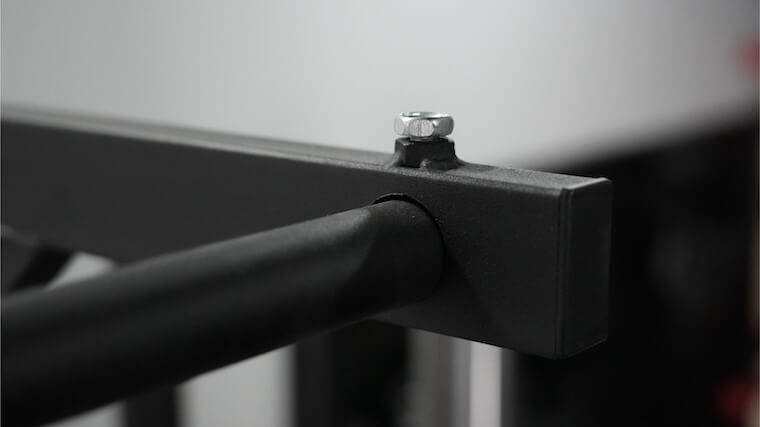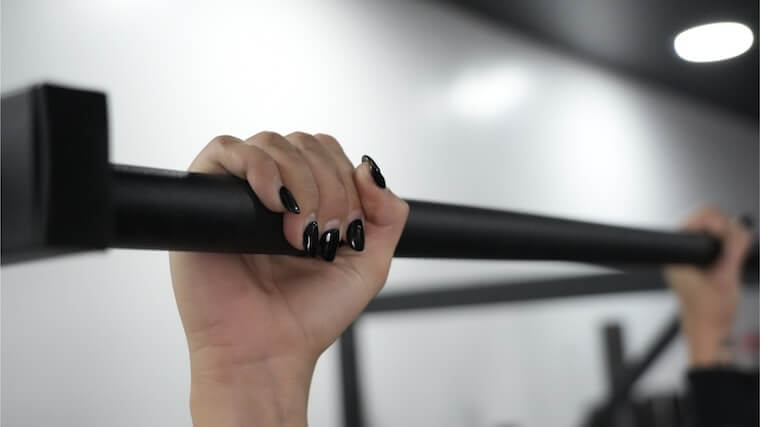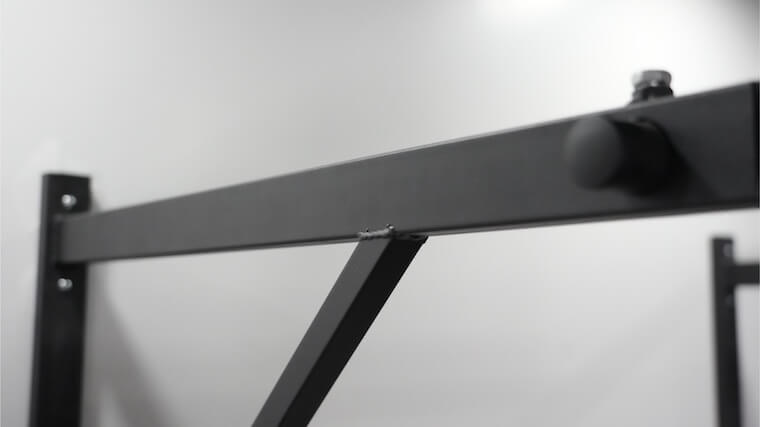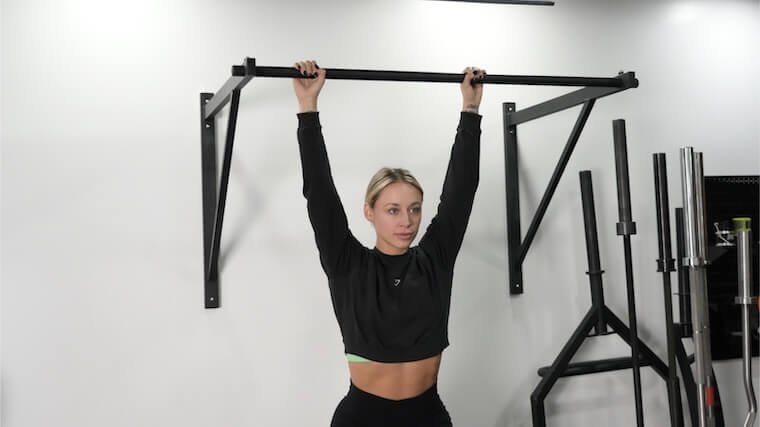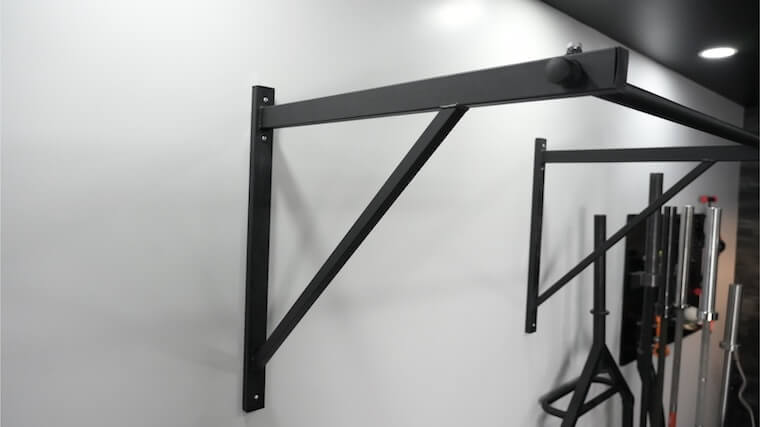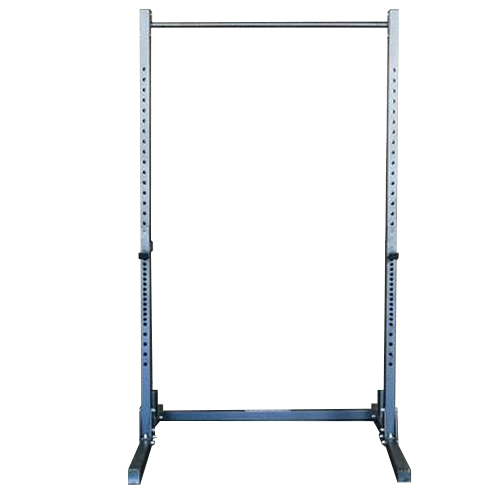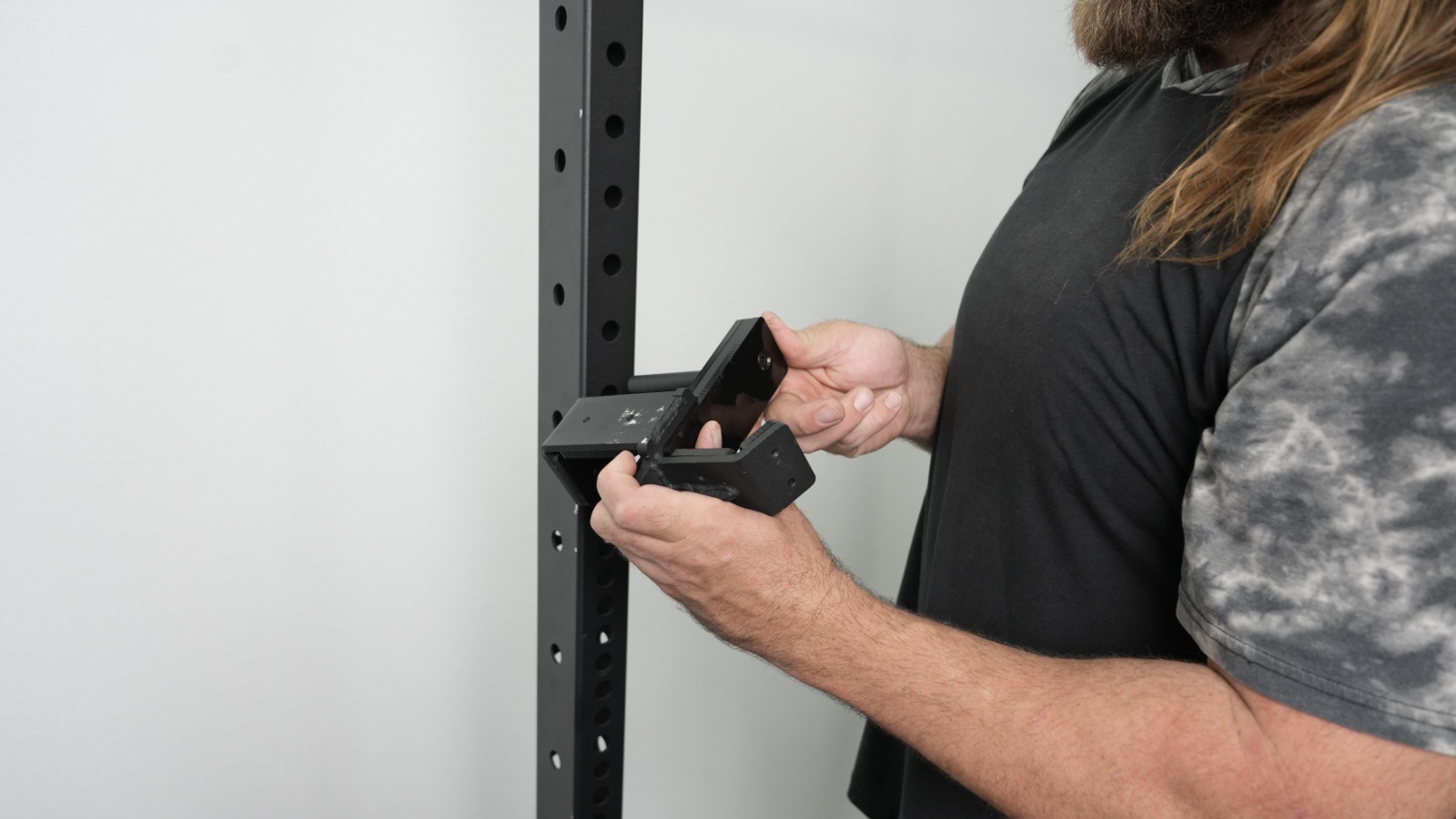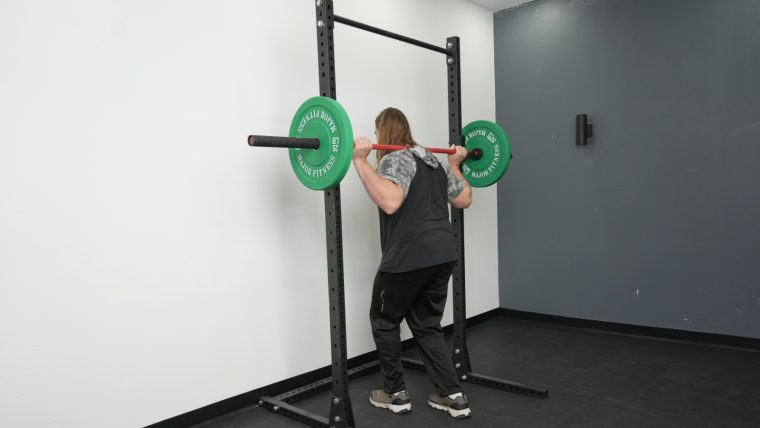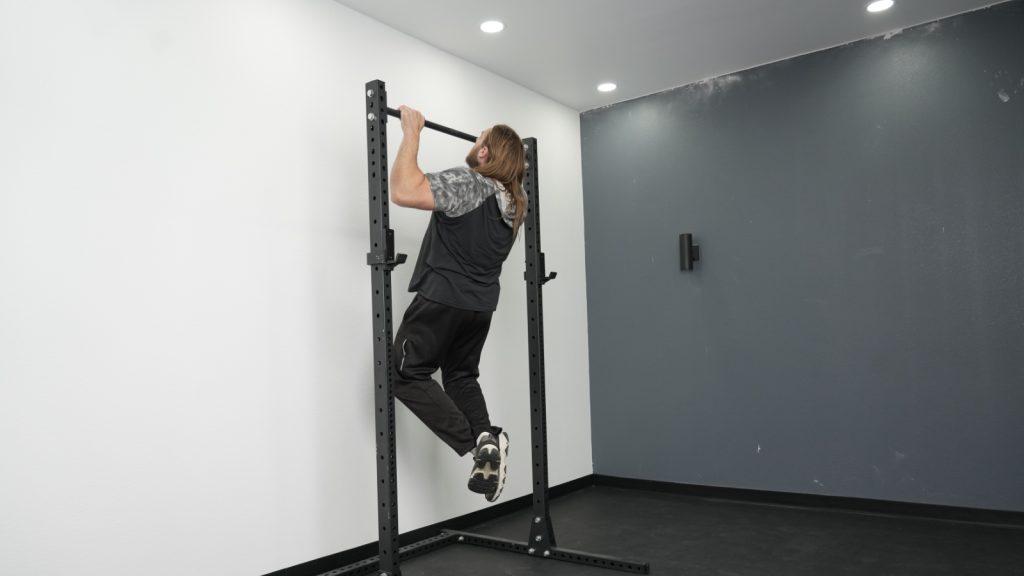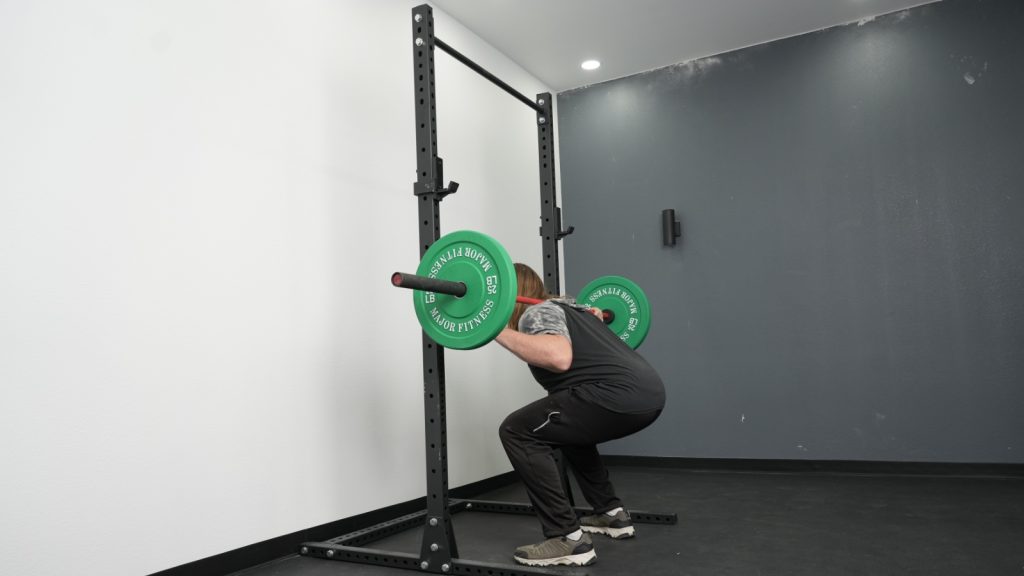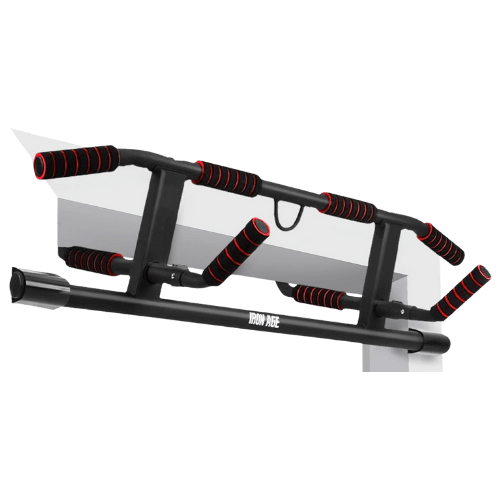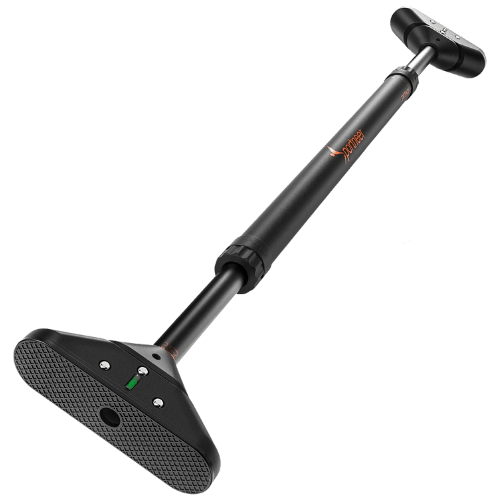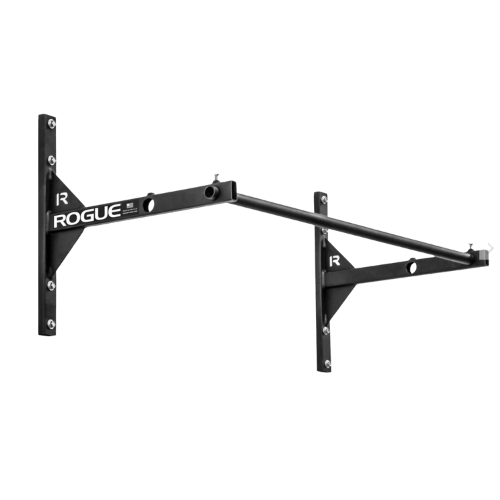Interested in turning your home gym into a strength training palace? “Strength training usually involves lifting weights, using resistance bands, or even your own body weight to create resistance across your muscles,” notes Dr. Christopher Mohr, PhD, RD, “So, you’ll need some of the best home gym essentials to create the required intensity.” While most may think of barbells, weight plates, and squat racks for such needs, the best pull-up bars can be worthy pieces of equipment that give you the opportunity to tackle home workouts, even with just a limited amount of available space.
Since pull-up bars require you to hang your entire body weight, you’ll want to ensure the structure is sturdy enough for regular use (and that your abode can accommodate required mounting setups). You should also take your training preferences into question — if you’re a fan of kipping pull-ups, for example, a doorway pull-up bar will likely be less than effective given the required overhead clearance. To help you choose the perfect bar for your setup, our team of experts has tested over a dozen profiles, using our equipment testing methodology to rate and examine each silhouette in categories such as:
- Materials: How durable are the components, and can they support a range of different weight capacities?
- Mounting Requirements: Does the frame need to be bolted to the wall or ceiling for added security? Is the structure a permanent fixture, or can it be moved from one area to the next with little effort?
- Grip Patterns: How many hand placements are available for different movements?
- Value: Does the performance of the pull-up bar justify the cost?
The BarBend team has helped connect over 850,000 athletes with high-quality strength training equipment from the best weight benches to resistance bands, cable machines, and (of course) pull-up bars. If you’re looking to elevate your bodyweight training protocols with a brand-new piece of gear, we’re confident that the following details can put you on the right path.
The 8 Best Pull-Up Bars of 2025
- Best Pull-Up Bar Overall: Bells of Steel Adjustable Wall or Ceiling Mounted Pull-Up Bar
- Best Multi-Grip Pull-Up Bar: REP Fitness Wall Mounted Multi-Grip Pull-Up Bar
- Best Freestanding Pull-Up Bar: Flybird Multi-function Power Tower
- Best Pull-Up Bar for Kipping Pull-Ups: Titan Fitness Wall-Mounted Pull-Up Bar
- Best Squat Rack Pull-Up Bar: Fringe Sport Squat Rack with Pull-Up Bar
- Best Pull-Up Bar for Doorways: Iron Age Door Pull-Up Bar
- Best Budget Pull-Up Bar: Sportneer Pull-Up Bar
- Best Ceiling-Mounted Pull-Up Bar: Rogue P-5V Garage Pull-Up System
Best Pull-Up Bar Overall: Bells of Steel Adjustable Wall or Ceiling Mounted Pull-Up Bar
This Bells of Steel pull-up bar is highly adjustable and can be mounted on your wall or ceiling and is capable of holding up to 330 pounds. Note: you can’t move the bar once you’ve set it up, so pick your spot wisely.
Best Multi-Grip Pull-Up Bar: REP Fitness Wall Mounted Multi-Grip Pull-Up Bar
The REP Fitness Multi-Grip Pull-Up Bar is a top-tier choice for versatile upper-body workouts. Just note, though, that you will need to mount this profile to your wall for optimal security — a potential negative for renters or apartment dwellers.
Best Freestanding Pull-Up Bar: Flybird Multi-function Power Tower
The Flybird Multi-function Power Tower is a solid freestanding option that supports a variety of bodyweight moves. It’s adjustable, well-cushioned, and doesn’t require drilling—though it may take up more floor space.
Best Pull-Up Bar for Kipping Pull-Ups: Titan Fitness Wall-Mounted Pull-Up Bar
The Titan Fitness Wall-Mounted Pull-Up Bar is a top pick for kipping pull-ups thanks to its generous clearance and solid construction. While we’d appreciate some included mounting hardware, we still like this bar’s 11-gauge steel frame and impressive weight capacity.
Best Squat Rack Pull-Up Bar: Fringe Sport Squat Rack with Pull-Up Bar
With a footprint of just 4 feet by 4 feet, this rack has a capacity of 600 pounds. It comes with a pair of j-cups and you also have the option to bolt this rack to the ground for an even more solid stand.
Best Pull-Up Bar for Doorways: Iron Age Door Pull-Up Bar
The Iron Age Door Pull-Up Bar is a smart choice for renters and travelers who want a no-drill, space-saving fitness tool. It’s compact and user-friendly, though it’s not built for more advanced or dynamic workouts.
Best Budget Pull-Up Bar: Sportneer Pull-Up Bar
The Sportneer Pull-Up Bar is an excellent choice for budget-conscious buyers looking for a simple, effective upper-body training tool. It’s easy to install and remove, though it’s best for basic, static exercises.
Best Ceiling-Mounted Pull-Up Bar: Rogue P-5V Garage Pull-Up System
The Rogue P-5V Garage Pull-Up System is a top-tier, ceiling-mountable bar that delivers unmatched durability and performance. It’s built to last, though installation and cost may be more than casual users need.
How We Tested and Chose the Best Pull-Up Bars
The BarBend team is composed of competitive athletes, certified personal trainers, nutrition coaches, and lifelong fitness enthusiasts. To compile this guide to the best pull-up bars, we tested and examined 15 different profiles from top brands, using our equipment testing methodology to guide our findings. Each pull-up bar was rated on a scale of 1 (lowest) to 5 (highest) in key categories, including:
- Materials: You’re not likely to trust your entire body weight across a structure with flimsy materials, right? Accordingly, we inspected each pull-up bar’s build components for durability and security, prioritizing silhouettes featuring steel frames and powder-coated bars for added grip and rust prevention. We also gave points to bars using thicker steel, as illustrated by their listed gauge — a lower number indicates a thicker material. (2)
- Mounting Requirements: We understand that some athletes — looking at you, apartment dwellers and renters — can’t efficiently mount structures to existing beams, walls, or framing. So, we made sure to include a mix of doorway, freestanding, wall-mounted, and ceiling-mounted pull-up bars to accommodate different living situations. We also considered the entire assembly process, making note of which bars came with proper hardware, and which required some extra trips to the hardware store.
- Grip Patterns: Pull-up bars can offer up some of the best upper body exercises, especially when you’re able to grasp onto the bar at different angles. While not a deal-breaker, we did place emphasis on bars offering multiple grip positions such as neutral grip, angled grip, cambered grip, and more.
- Weight Capacity: Related to a pull-up bar’s durability is its listed weight capacity. Your profile should be able to comfortably accommodate your body weight as you sweat and pull through each upper body workout. We made sure to include listed metrics for each top pick.
- Value: Pull-up bars aren’t the most expensive piece of gym equipment, but they certainly aren’t free. As such, we made sure to include a range of bars at differing price points to appeal to different needs and budgets.
Benefits of Pull-Up Bars
Despite their simple makeup, pull-up bars may be the perfect fitness tool. From developing upper body strength to growing your back muscles, heightened versatility, and space-saving dimensions, here are a few of our favorite perks associated with this classic piece of home gym equipment.
- Improved Upper Body Strength: Studies report that implementing pull-up training can show positive growth in upper body strength. (3) Additionally, you can customize your setup for even more muscle gains with just a few items. For example, weighted pull-up benefits include increased back size, improved grip, and better pulling strength due to the added resistance. Altered grips can target different muscle groups across your shoulders, chest, arms, and back, as well.
- Functional Fitness Perks: Pulling strength is a foundational factor in functional fitness, or your ability to perform daily activities. Naturally, then pull-ups can be a worthwhile workout for those interested in improving their quality of life.
- Space-Saving Training: Unlike the best power racks or cable machines, pull-up bars don’t require a ton of space. Most wall-mounted pull-up bars extend no more than 36 inches from your structure, and some even offer ceiling-mounted or doorway-mounted capabilities.
- Entry-Level Pricing: You can purchase a high-quality pull-up bar for roughly $155, which is less than some of the best running shoes on the market today. Despite the lower costs, the value-to-performance ratio remains high given the amount of strength training that can be accomplished across a single bar. Amanda Capritto, CPT, CSNC, CPS adds, “While there are definitely plenty of cheaply built items that aren’t worth your dime floating around on the market, there are also some really solid, serious brands catering to an important niche: good, long-lasting home gym equipment for reasonable prices.”
How Much Do Pull-Up Bars Cost?
Like the best dumbbells, weight plates, treadmills, and other home gym equipment, pull-up bars can vary in price depending on factors like weight capacity, mounting needs, available grip positions, and more. On average, though, you can expect to pay roughly $155 for a high-quality profile. Below, we’ve outlined the MSRPs of each pull-up bar featured in this guide. Take a gander at our top picks and see how your budget compares.
| Best Pull-Up Bar Overall | Bells of Steel Adjustable Wall or Ceiling Mounted Pull-Up Bar | $146.99 |
| Best Multi-Grip Pull-Up Bar | REP Fitness Wall Mounted Multi-Grip Pull-Up Bar | $139.99 |
| Best Freestanding Pull-Up Bar | Flybird Multi-function Power Tower | $239.00 |
| Best Pull-Up Bar for Kipping Pull-Ups | Titan Fitness Wall-Mounted Pull-Up Bar | $102.99 |
| Best Squat Rack Pull-Up Bar | Fringe Sport Squat Rack with Pull-Up Bar | $349.00 |
| Best Pull-Up Bar for Doorways | Iron Age Door Pull-Up Bar | $69.99 |
| Best Budget Pull-Up Bar | Sportneer Pull-Up Bar | $43.99 |
| Best Ceiling-Mounted Pull-Up Bar | Rogue P-5V Garage Pull-Up System | Starting at $145.00 |
What to Consider Before Buying a Pull-Up Bar
Like any fitness-related purchase, there can be multiple factors that go into choosing the perfect pull-up bar for your home gym and workout preferences. Below, we’ve listed a handful of top considerations to keep in thought before you finalize your online cart.
Available Space
No matter how small the fitness equipment is — from the best exercise bikes for small spaces to under-desk treadmills, all-in-one trainers, and beyond — measurements are always needed. When searching for a proper pull-up bar, take a look at your available space and see where you can comfortably mount the profile and how that will impact your layout. “Take some measurements and compare that to the listed dimensions of your chosen product,” notes Amanda Capritto, CPT, CSNC, CPS.
If you’re in need of a smaller silhouette (or don’t want to renovate your space by permanently mounting a structure to your wall or ceiling), you can opt for a door frame pull-up bar. However, you’ll still need to measure the doorway’s opening and choose a bar that can be adjusted to fit. Remember, too, that a fully-extended doorway pull-up bar will be less stable in terms of weight capacity, so try and find a profile that fits your metrics without too much alteration.
Mounting Requirements
Some pull-up bars require a full wall mount or ceiling mount in order to be used effectively. While this may be a fun, new project for home gym enthusiasts working with an unfinished garage or shed, it could be unfeasible for athletes in a rental, or those with limited tools or DIY skills. Look at the requirements prior to purchase to ensure if your bar of choice can actually be set up within your abode.
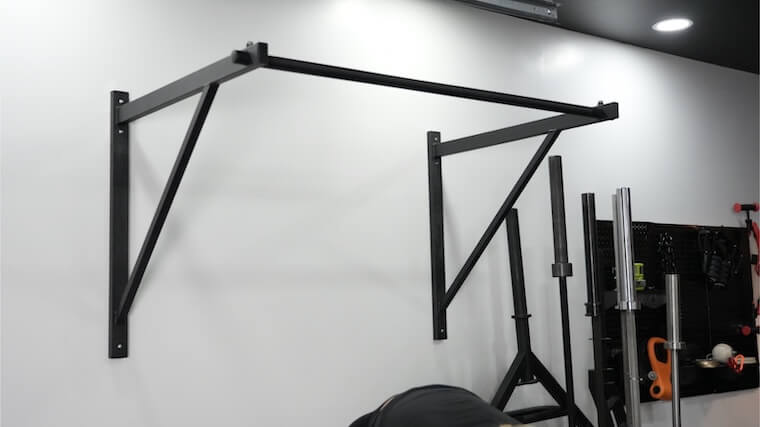
If you do opt for a wall- or ceiling-mounted pull-up bar, you should also look to see if mounting hardware comes with the purchase. Some brands do not bundle the necessary nuts, bolts, and anchors, so you may need to hit up the hardware store prior to installation.
Materials and Construction
You’re essentially putting your entire body weight across the pull-up bar as you dead hang, pull, and lower yourself through each rep. Accordingly, you want to choose a structure that can comfortably support your weight without damage to your home or self. Prioritize bars with sturdy, durable materials like steel, and pay close attention to listed weight capacities — similar to your buying experience with the best bodyweight suspension straps.
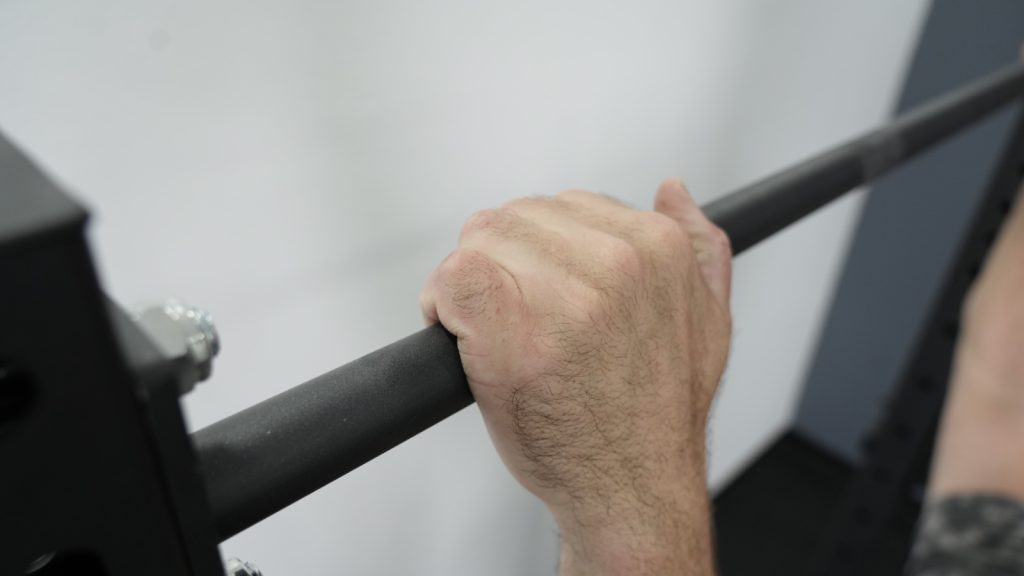
In addition to the weight capacity, it can also be wise to look at the overall dimensions of your pull-up bar. While the specs can give you a good idea of the required space, it can also help determine which exercises you can (comfortably) perform with the rig. For example, those interested in kipping pull-ups and muscle-ups will require added depth from the wall in order to create the body momentum necessary for proper reps. If your bar is too close to the wall, you’ll likely struggle to achieve a proper swing.
Budget
While the best pull-up bars typically cost roughly $155, that can still be an expensive purchase for some. Thankfully, there are worthwhile options across a range of different price points, so don’t feel like you’re missing out if you can’t afford this median cost. Look at your finances, determine your spending limit, and begin to filter your search based on these numbers. Remember, the best piece of fitness equipment is the one that suits your budget best.
Best Pull-Up Bars FAQs
How much do pull-up bars cost?
Pull-up bars can vary in cost depending on such factors as weight capacity, grip positions, materials, mounting needs, and more. On average, though, you can expect to pay roughly $155 for a high-quality pull-up bar.
How much weight can a pull-up bar hold?
Your pull-up bar’s weight capacity can vary, so it’s important to check your chosen bar’s rating prior to purchase. Some bars are rated for up to 700 pounds, while others may carry a lighter capacity.
What is the best pull-up bar?
The best pull-up bar can be subjective from one athlete to the next. In our opinion, though, the Bells of Steel Adjustable Wall or Ceiling Mounted Pull-Up Bar is a top-notch bar thanks to its impressive weight capacity, included eyelets for resistance bands and gymnastics rings, as well as a limited lifetime warranty package.
At what height should I put my pull-up bar?
There is no standard height for a pull-up bar. That said, we recommend keeping roughly 20 inches overhead to account for your head clearance at the end of a rep. Additionally, make sure you can dead hang from the bar with some clearance underfoot — typically with your knees bent.
References
- Rybczynski, W. (n.d.). Ceiling Heights in Homes and Offices. Samuel Zell & Robert Lurie Real Estate Center. https://realestate.wharton.upenn.edu/working-papers/ceiling-heights-in-homes-and-offices/
- Btiernay. (2024, March 5). Sheet Metal Gauge Chart. Metal Supermarkets. https://www.metalsupermarkets.com/sheet-metal-gauge-chart/
- Pardo-Atarés, C., Generelo, E., Cirer-Sastre, R., López-Laval, I., & Sitko, S. (2024). Effects of pull-up training on 50-meter freestyle swimming performance: A preliminary analysis. Cureus. https://pmc.ncbi.nlm.nih.gov/articles/PMC11344870/
